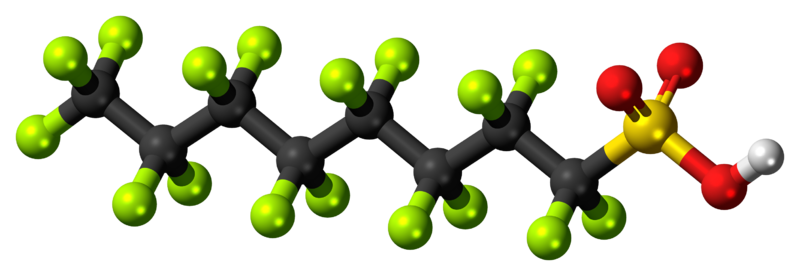
The End of Forever Chemicals
“Forever chemicals” are frequently in the spotlight these days. A study conducted last August by researchers from Stockholm University revealed that these synthetic substances, receiving their names from the fact they are not easily broken down in nature, mix with rain water and can be found anywhere on the planet, including the poles. The EPA (US Environment Protection Agency) recently stated that two of the most common among these toxic substances are linked to cancer, and they have become a part of our lives, from drinking water to furniture. Another recent study led by Northwestern University researchers in the US claims that the forever chemicals can be broken down and neutralized in a relatively simple way.
These chemicals have been in our lives for about 70 years. They are a group of synthetic substances, called PFAS in general, with over 12,000 different types according to the EPA. These perfluoroalkyl and polyfluoroalkyl compounds are widely used in food packaging, textile products, and cosmetics, as well as in the manufacturing of non-stick pans and pots, electronic devices and many other products that provide water-repellent qualities. They are known to accumulate in the body of living organisms, as proven further by a number of recent studies that have reported some alarming health effects linked to them -including cancer, birth defects, endocrine system disorders, developmental disorders, infertility and immune system diseases. We take them in with drinking water, food and through breathing. It is very difficult to separate them from drinking water in particular. Experts estimate that 97% of US citizens have PFAS in their blood.
Although many manufacturers have decided to phase out the use of these compounds, they will remain in our lives for a long period of time –as hinted by their name. What makes them persistent and long-lasting is the carbon-fluorine bonds in their structure, the strongest bond known in organic chemistry. Fluorine is an electronegative element, meaning it has a tendency to gain electrons, while carbon is always happy to share electrons. According to William Dichtel, a researcher from Northwestern University, this is the ideal formula for a very strong chemical bond.
Various methods have been tried to get rid of these forever chemicals. However, they were detected in the chimneys of facilities that burn garbage to generate energy and were also determined in the soil and groundwater near facilities where garbage is buried underground. So these methods of “out of sight, out of mind” do not just fail to solve the problem, but they also create worse outcomes where these chemicals spread for decades.
Even though PFAS can be separated from drinking water, food and waste, we do not yet clearly know what to do with them afterward. So far, they have been observed to decompose at very high temperatures, under high pressure and generally by methods that consume a lot of energy.
The new method developed by Northwestern University chemists succeeded in breaking down PFAS by applying commonly used reagents at relatively low temperatures, decomposing compounds from the two major classes of PFAS into harmless end products. “We can’t just wait out this problem,” says William Dichtel, who led the study, “Even just a tiny, tiny amount of PFAS causes negative health effects, and it does not break down. We wanted to use chemistry to address this problem and create a solution that the world can use. It’s exciting because of how simple — yet unrecognized — our solution is.”
Dichtel’s team claims to have found the Achilles’ heel of PFAS. These compounds are usually composed of very long carbon-fluorine chains, but one end of the molecule usually contains charged oxygen atoms. The team targeted this end, heating the PFAS in a solution of dimethyl sulfoxide and sodium hydroxide. This process caused the end-group to fall apart. “That triggered all these reactions, and it started spitting out fluorine atoms from these compounds to form fluoride, which is the safest form of fluorine,” says Dichtel.
So far, the team has managed to break apart 10 different forever chemical compounds known as PFCA, PFECA, PFOA and GenX into harmless compounds with this method. So, the math dictates 10 gone but 11,990 left. Dichtel and his team are hopeful nonetheless, “Our work addressed one of the largest classes of PFAS, including many we are most concerned about. There are other classes that don’t have the same Achilles’ heel, but each one will have its own weakness. If we can identify it, then we know how to activate it to destroy it.” The study by Dichtel and his team was published in the August 19, 2022 issue of Science.
Another important piece of information to note at this point is that the levels of PFAS detected in the environment and in the human body have actually been declining for the past 20 years according to Professor Ian Cousins, who led a study to determine the presence of PFAS in rain water around the world. What changed is that the legal safety levels have been dropping as we keep learning more about the dangers of these substances. According to Cousins, there is not much we can do about it and we need to learn to live with it. “We have made the planet inhospitable to human life by irreversibly contaminating it now so that nothing is clean anymore. And to the point that it’s not clean enough to be safe”.
REFERENCES
- 1. https://phys.org/news/2022-08-rainwater-unsafe-due-chemicals.html
- 2. https://www.nytimes.com/2022/08/26/climate/epa-pfas-forever-chemicals-hazardous.html
- 3. https://phys.org/news/2022-08-chemicals-simple-method.html
- 4. https://chemtrust.org/pfas/
- 5. https://www.washingtonpost.com/climate-environment/2022/08/26/forever-chemicals-epa-cleanup-rule/
- 6. https://www.science.org/doi/10.1126/science.abm8868
